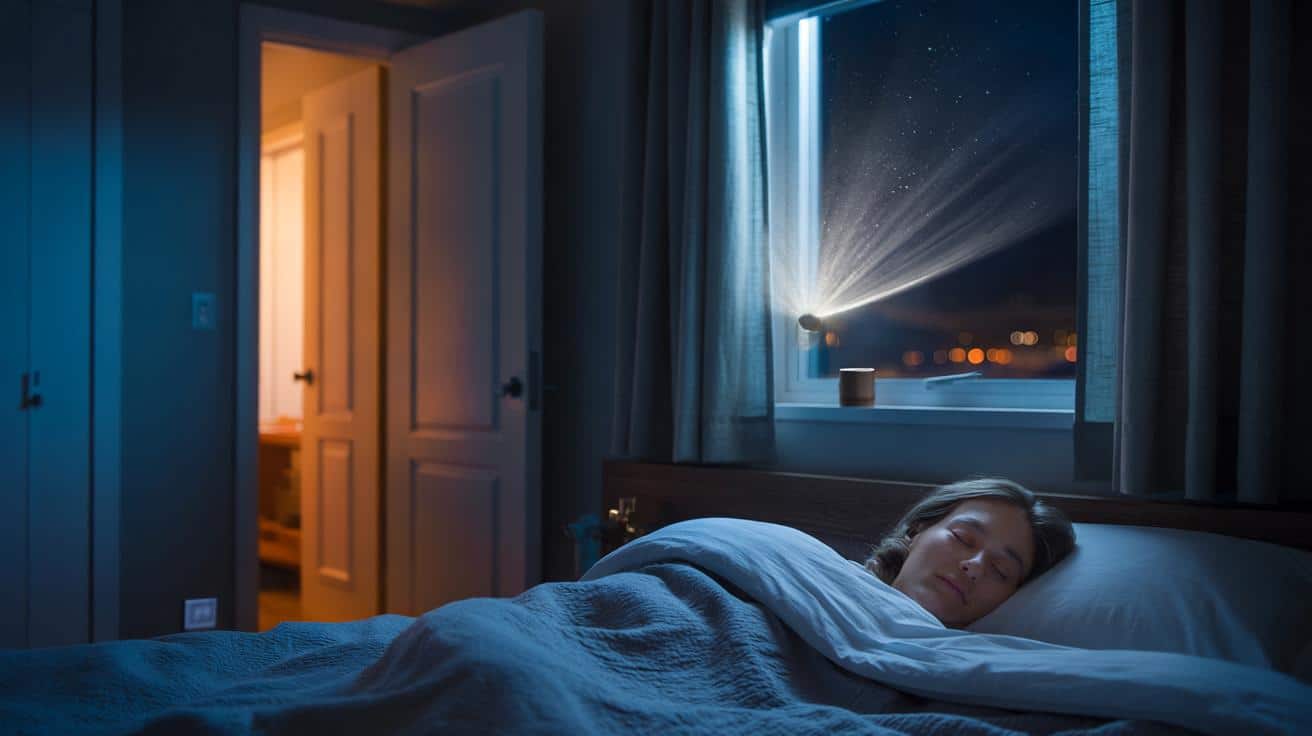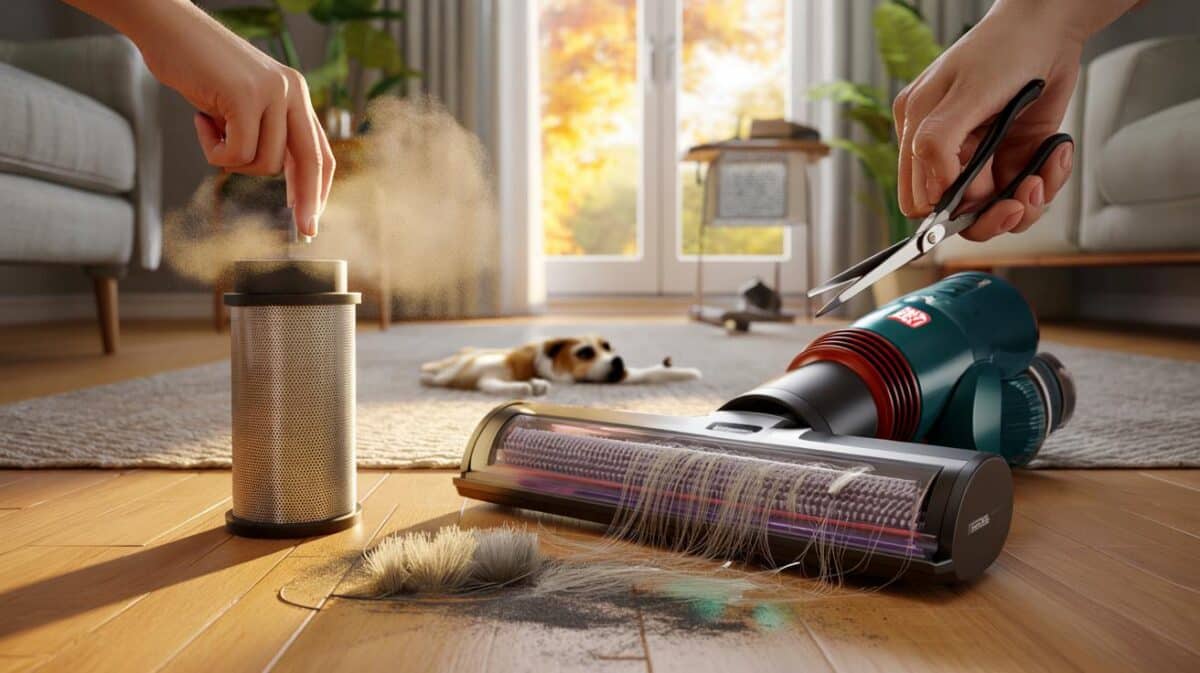The fix many miss costs nothing and takes seconds.
As evenings draw in and bedrooms warm up, people reach for supplements, sleep trackers and scented diffusers. Yet two small, almost old-fashioned moves keep resurfacing in households trying to reclaim shut‑eye: crack the window and keep the bedroom door ajar.
Two tiny habits that reset the night
Why we chase apps and overlook airflow
Sleep has become a product. You can measure it, compare it, and subscribe to it. One in three adults reports regular night‑time trouble, and the search for solutions rarely pauses. In that noise, simple airflow loses out to algorithms. A room that breathes gets ignored because it feels too mundane to matter.
The low‑tech duo hiding in plain sight
The method is spare. Leave the door slightly open to stop the room feeling sealed. Leave the window barely open to refresh the air and drop the temperature. No notifications, no firmware updates, no ongoing cost. Just a steady, quiet change to how your bedroom behaves over eight hours.
Two small adjustments – a door ajar and a sliver of fresh air – can lower CO₂, ease anxiety and speed up sleep onset.
What actually happens in your room after lights out
Stale air, rising CO₂ and the trapped feeling
Close everything and your bedroom becomes a jar with a lid. Exhaled CO₂ builds up. Humidity rises with every breath. Warmth pools. You sense it without naming it: a faint heaviness, a need to shift position, a subtle urge to check the clock. Crack the door and that pressure lifts. The room no longer feels like a capsule. The brain stops scanning for escape routes and relaxes into drowsiness.
The cool sweet spot that helps the brain switch off
Most sleepers do best at 16–18°C. Cooler air nudges the body’s core temperature downward, which supports melatonin timing and deeper stages of sleep. A window opened just a few millimetres can lower a stuffy 21–22°C room into that comfort zone. You wake with fewer headaches, less dry throat, and a calmer pulse.
Target 16–18°C, steady airflow and darkness. That trio often outperforms pricey devices for depth and continuity of sleep.
How to test it tonight without stress
Setup checklist for a quieter, safer trial
- Wedge the door so it stays ajar and won’t slam in a draught.
- Fit a window restrictor or use the night‑vent position to lock a narrow opening.
- Move the bed so air flows past, not straight onto your face.
- Switch to a warmer duvet (10.5–13.5 tog in winter) to balance the cooler room.
- Hang heavier curtains to dim light and dampen street noise.
- Set the thermostat lower in bedrooms; heat living areas earlier in the evening instead.
City noise or pollution nearby? Try an earlier airing. Ventilate the room for 20–30 minutes before bedtime, then leave the door ajar overnight. You still cut stale air while limiting outdoor intrusion.
What people notice after a week
Faster nod‑off, steadier nights, brighter mornings
The pattern that comes up again and again is simple. Bedtime fidgets ease. Wake‑ups shrink. Mornings feel cleaner and less foggy. The routine then reinforces itself, because a better first half of the night makes the second half less fragile.
| Change | Immediate effect | Morning after |
|---|---|---|
| Door left ajar | Less “boxed‑in” feeling, smoother airflow, fewer clock checks | Lower tension, fewer stress dreams reported |
| Window slightly open | Room reaches 16–18°C, CO₂ dilution, lower humidity | Fewer headaches and dry mouth, clearer focus by 10am |
Sensible caveats and smart workarounds
Security, noise, cold and allergies
Ground‑floor flat or a street that never sleeps? Use a restrictor and position the opening away from easy reach. If sound is the issue, add a low fan or pink‑noise machine to mask sporadic traffic. For pollen seasons, ventilate in the cooler late evening, use a fine mesh screen, and rinse bedding more often. A portable HEPA purifier can help on smoggy days; pair it with the door ajar to keep CO₂ in check.
Asthma or chronic nasal congestion can flare with very cold air directly on the face. Reposition the bed and aim the gap upward, not across. Aim for 40–60% relative humidity; a simple hygrometer costs little and guides you away from too‑dry air that irritates airways.
Why airflow beats gadgets for many bedrooms
The physiology behind the “cheap fix”
Fresh air trims CO₂, which otherwise creeps higher in a sealed room and increases arousals. Cooler ambient temperature supports a drop in core temperature, a natural signpost for sleep onset. A slightly open door reduces perceived threat and claustrophobia, which calms the sympathetic nervous system. This trifecta – chemistry, temperature and psychology – aligns without a subscription fee.
Make it a habit and measure what matters
A simple plan for the next seven nights
- Night 1–2: Door ajar by 5–10 cm. Record bedtime and wake time.
- Night 3–4: Add a 3–5 mm window gap. Note room temperature at lights‑out.
- Night 5–7: Adjust duvet and pyjamas to stay warm while the room stays cool.
- Each morning: Rate sleep quality 1–5 and log any night‑time wake‑ups.
By the end of the week you will see a pattern in your notes. If the first half of the night tightens up and the morning feels steadier, keep the routine. If noise or cold intrudes, tweak the gap, the bedding, or the ventilation timing.
Going further without spending much
Small, concrete tweaks that stack with airflow
- Morning light: step outside for 10–20 minutes before 10am to anchor your body clock.
- Caffeine cut‑off: stop 8 hours before bedtime; many feel the difference at 2pm.
- Alcohol buffer: finish drinks at least 3 hours before lights‑out to protect deep sleep.
- Heat and cool: take a warm shower 60–90 minutes before bed to speed heat loss after.
- Screens: use warmer colour temperatures after sunset and dim brightness sharply.
- Bedroom use: keep it for sleep and intimacy; move work and TV elsewhere.
If long‑term insomnia persists, a structured programme such as cognitive behavioural therapy for insomnia can help retrain timing, thoughts and behaviour around sleep. Airflow still supports that process by making the bedroom feel calm and breathable from night one.
For households juggling energy bills, a cooler bedroom brings savings too. Heat living spaces for the evening window, then allow bedrooms to settle at 16–18°C. Warm bodies under heavier duvets do well while rooms breathe and stay quiet. The result feels modest yet noticeable: an easier drift to sleep, fewer mid‑night jolts, and mornings that start on the front foot.







